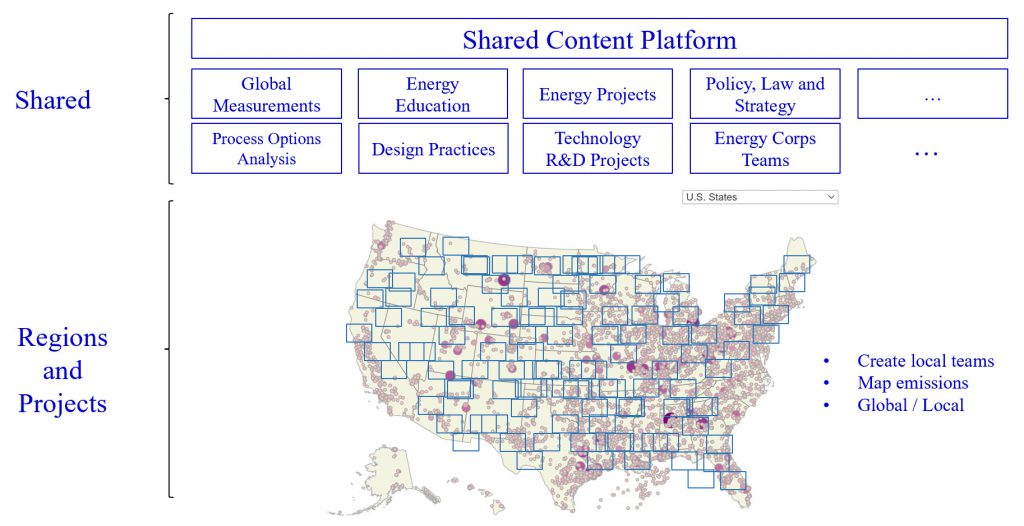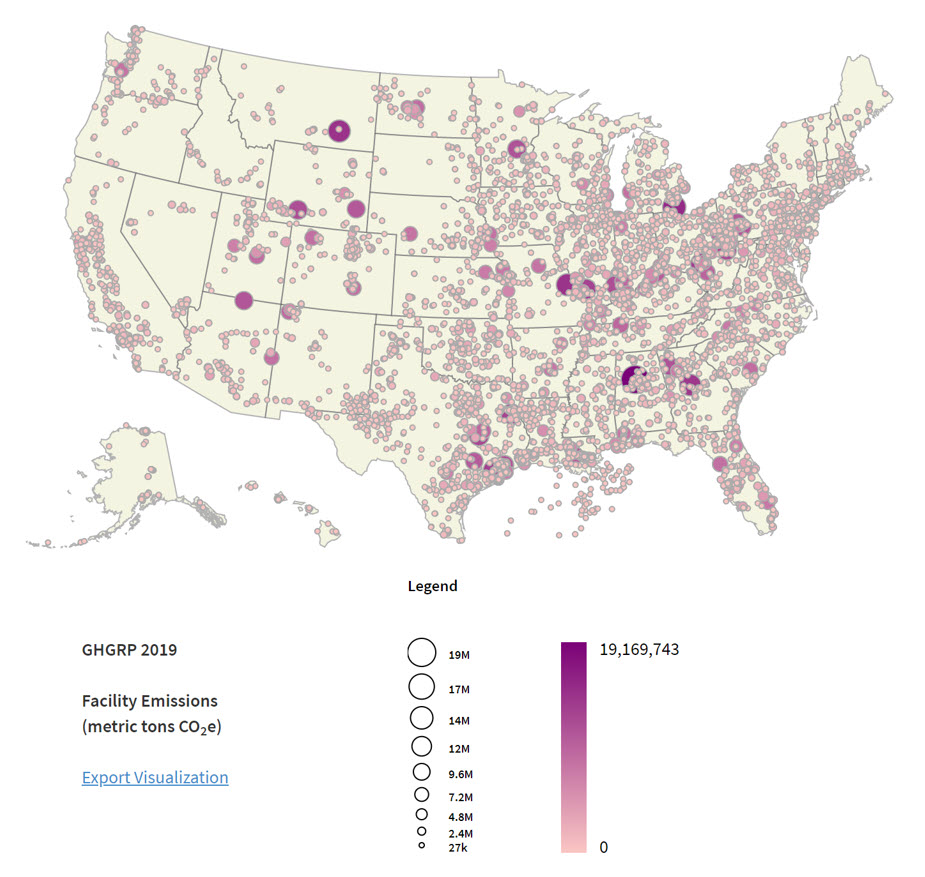Greenhouse Gas Concentrations
• Climate change is addressed by reducing the concentration of greenhouse gases in the atmosphere. Link
• Despite major global effort, the greenhouse gas concentration (GHG) in the atmosphere is continuing to rise. Link
• There is a need for a global coordinated improvement effort to ensure that investments and changes made reduce greenhouse gases concentration.
• Engage the next generation through the Sustainable Energy Corps including students, communities, professionals, universities, companies, government, and other stakeholders.
Climate Change Plan
• We need a coordinated global plan to transition our existing fossil energy asset base to a future sustainable design. Link
• The approach begins with the measurement of greenhouse gas concentration in the atmosphere.
• A process improvement model is required to reduce major emissions points to overall atmospheric concentration.
• Established process improvement methods can be applied to connect global to local with focus on measurements and improvement actions.
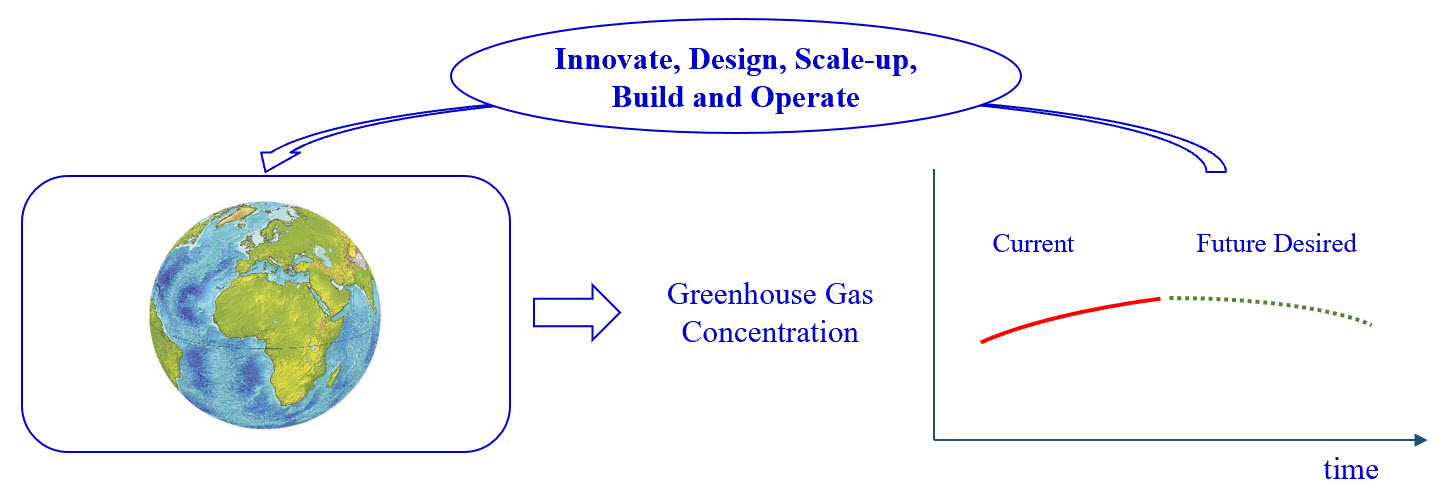
Notes:
The chemical industry has established large asset design, development, and commercialization practices over many decades. Further, process improvement methods to improve process, product quality performance have found wide application. These capabilities can be combined with public, political, country, tax, and policy objectives to establish a common global approach.
Map Global to Local Emissions
• Global emissions come from all across the world.
• Global emissions are the sum of all emissions from countries around the world.
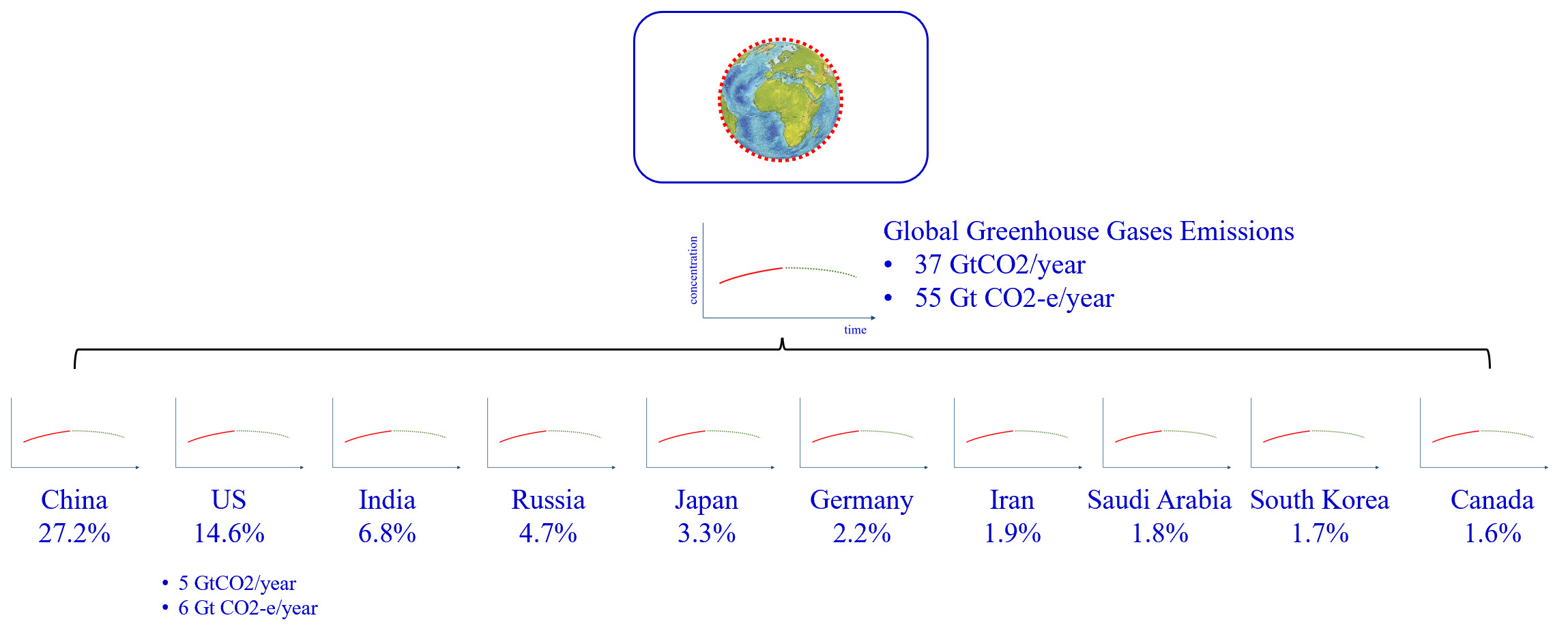
Identify Emission Points
• There are existing measurements of emission points around the globe.
• For the US, the EPA has data available by location and emission type.
• Local teams aggregate all the emissions in their region, also find other emissions points to create a comprehensive list of emission points.
• For the USA, other emission points not in the EPA database should be mapped and included in the global emissions database.
Translate “Adopt a Highway” Approach
• Map global atmospheric gas concentration to local emission points.
• Local teams can be formed translating the “Adopt-a-highway” program in the US.
• Local Sustainable Energy Corps Teams can define a region of coverage and map all emissions in that region.
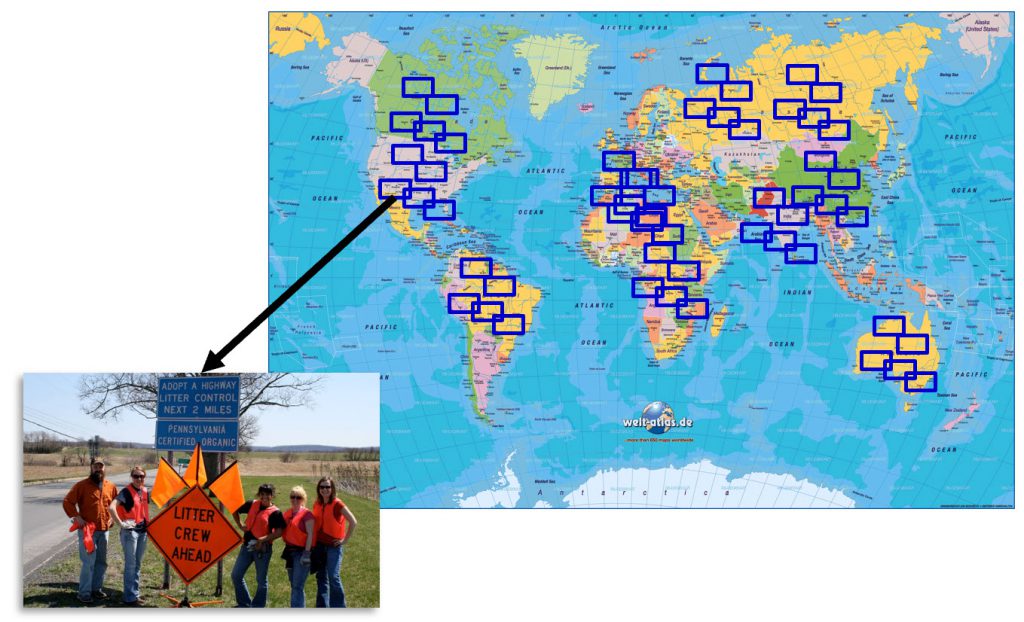
Emission Points Adopted by Local Energy Corps Teams
• The emission point sources, magnitude and type of emissions are claimed by local region team.
• For each region validate and search for any additional emission points.
• The region team as the measure of all emissions and emission types by region.
Teams Analyze and Propose Plan by Facility
• The region greenhouse gases emission points are adopted by the region.
• For each point, a series of options are considered with estimates of cost and emissions benefits. Solutions for each emission point can be done using existing technology.
• Projects should be segmented carbon benefits vs. total system cost. Three high level areas – (1) High value – accelerate implementation, (2) Margin benefit vs. costs — seek new innovation; (3) low benefits at high cost, redirect or seek new innovation opportunity. Option analysis should also consider policy and tax alternatives as part of the financial analysis.
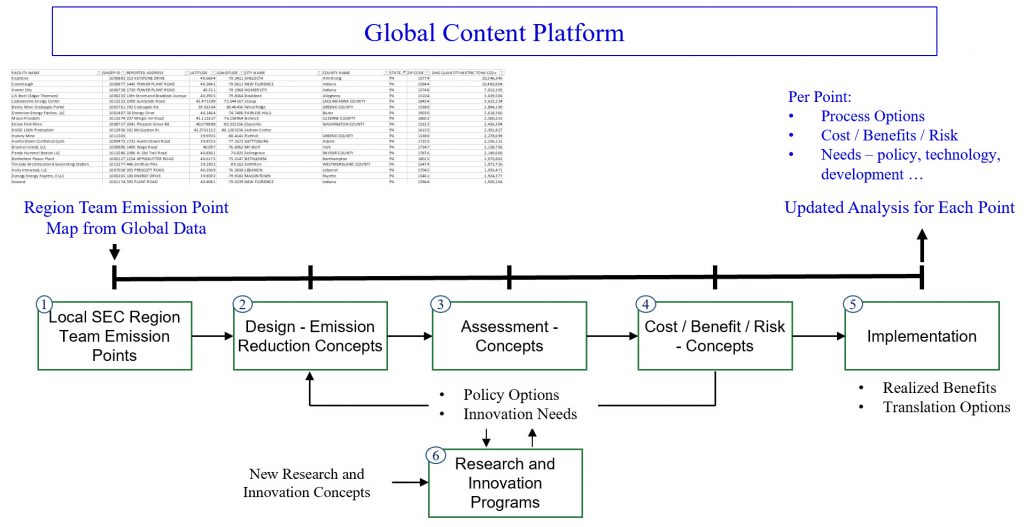
Note: starting with existing emission points is a first step. There will be a need to look across regions at supply chain and system transformation needs such as with power generation, electric vehicles etc.
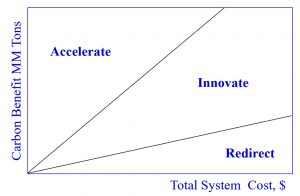
Facility Results Back to Global Level (Predicted to Actual)
• All regional results combined to add back to the global level.
• At the global level compare current trend with future predicted performance. Analyze information for top opportunities, needed innovation programs, and critical implementation requirements.
• Region results need to capture both carbon reduction as well as any new additions which may be in the same region or other region globally.
Example Note: If a coal power plant is eliminated in one region, the offset for solar and batteries should be added back to provide net carbon to the atmosphere.
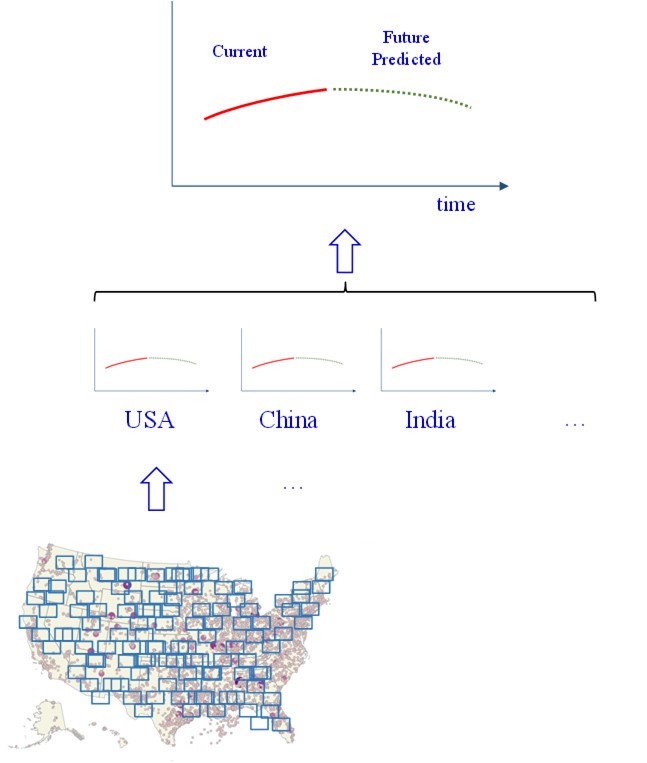
Shared Content Platform for Global Collaboration
• Use a global platform sharing sharing and updating data and content.
• Shared content for education, life cycle assessment, design practices can be used and suggestions for updates can be offered.
• A global data platform should include all global emissions as well as all of the analyses from local teams including costs and benefits.
